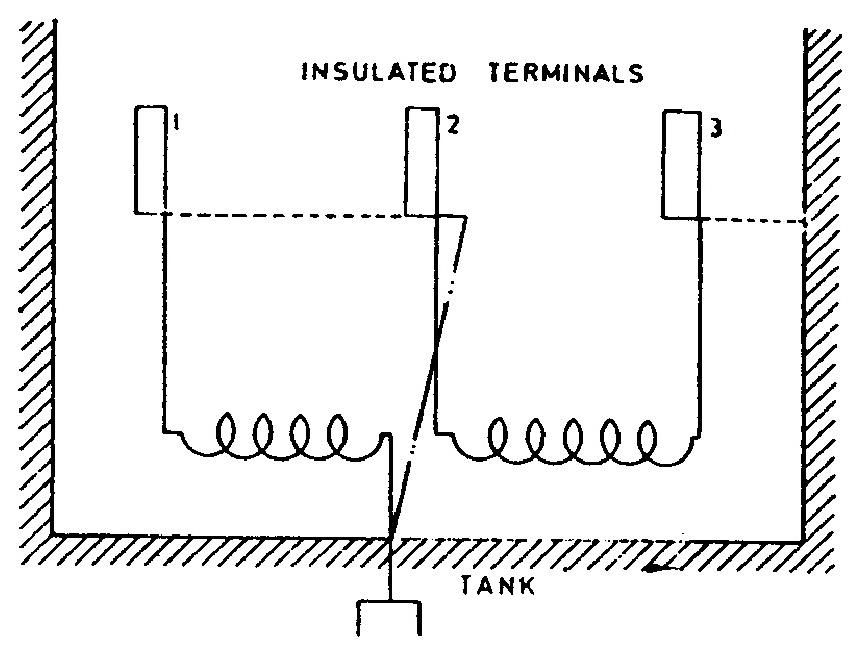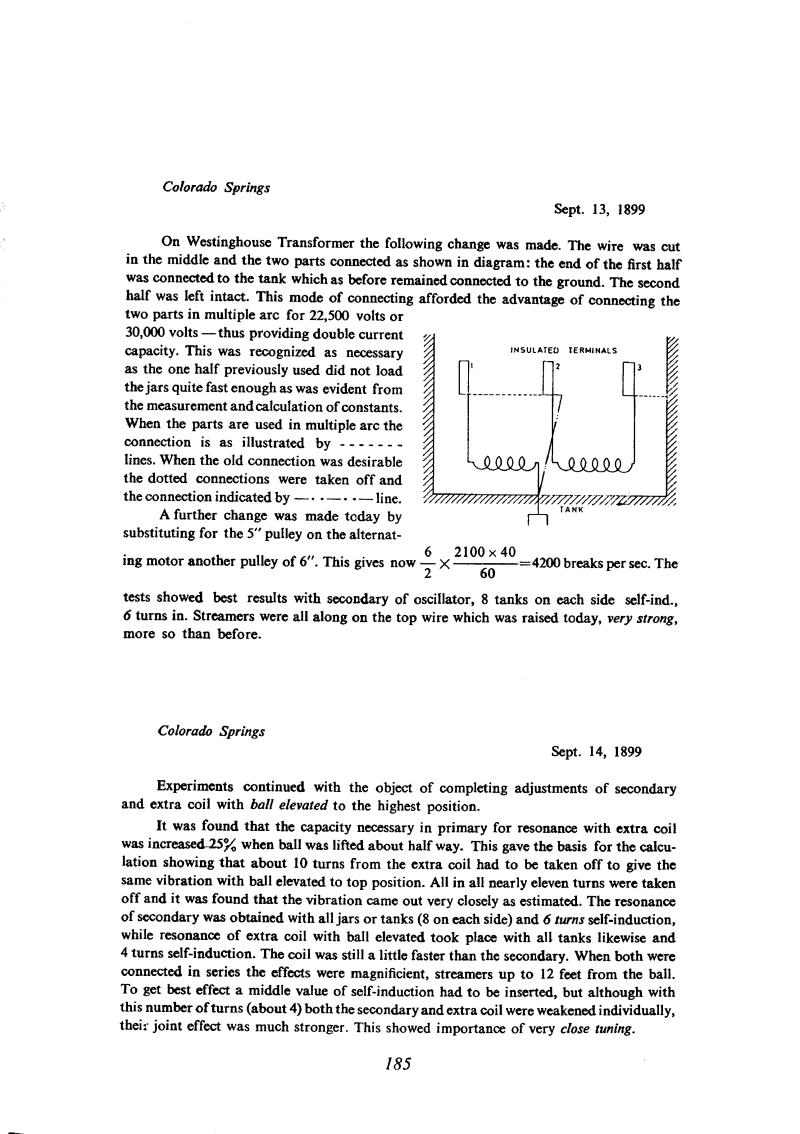
Nikola Tesla Books
Colorado Springs
Sept. 13, 1899
On Westinghouse Transformer the following change was made. The wire was cut in the middle and the two parts connected as shown in diagram: the end of the first half was connected to the tank which as before remained connected to the ground. The second half was left intact. This mode of connecting afforded the advantage of connecting the two parts in multiple arc for 22,500 volts or 30,000 volts - thus providing double current capacity. This was recognized as necessary as the one half previously used did not load the jars quite fast enough as was evident from the measurement and calculation of constants. When the parts are used in multiple arc the connection is as illustrated by - - - - - - - lines. When the old connection was desirable the dotted connections were taken off and the connection indicated by â··â··â line.
A further change was made today by substituting for the 5" pulley on the alternating motor another pulley of 6". This gives now $! {{{6 \over 2} \times {{2100 \times 40} \over 60}} = 4200} $! breaks per sec. The tests showed best results with secondary of oscillator, 8 tanks on each side self-ind., 6 turns in. Streamers were all along on the top wire which was raised today, very strong, more so than before.
Colorado Springs
Sept. 14, 1899
Experiments continued with the object of completing adjustments of secondary and extra coil with ball elevated to the highest position.
It was found that the capacity necessary in primary for resonance with extra coil was increased 25% when ball was lifted about half way. This gave the basis for the calculation showing that about 10 turns from the extra coil had to be taken off to give the same vibration with ball elevated to top position. All in all nearly eleven turns were taken off and it was found that the vibration came out very closely as estimated. The resonance of secondary was obtained with all jars or tanks (8 on each side) and 6 turns self-induction, while resonance of extra coil with ball elevated took place with all tanks likewise and 4 turns self-induction. The coil was still a little faster than the secondary. When both were connected in series the effects were magnificent, streamers up to 12 feet from the ball. To get best effect a middle value of self-induction had to be inserted, but although with this number of turns (about 4) both the secondary and extra coil were weakened individually, their joint effect was much stronger. This showed importance of very close tuning.
185
September 13
From a document found in the archives of the Nikola Tesla Museum in Belgrade it may be seen that Westinghouse Comp. sent Tesla a 50 kW power transformer for a primary voltage of 200/220 V and secondary tappings of 40, 50 and 60 kV. This is probably the Westinghouse transformer which he often mentions.
September 13
In the archives of the Nikola Tesla museum in Belgrade one document was found from which it could be seen that in the month of July, Westinghouse Company shipped to Tesla a transformer rated 50kw with the primary voltage 200/220 V and the secondary voltages 40, 50 and 60kv. Probably that was the "Westinghouse" transformer that Tesla frequently mentioned.
September 14
He lists the metal globe connected to the oscillator to the highest position (he does not provide the information about the actual height).
With the series connection of an oscillator "secondary" coil (similar to Fig. 1 shown Sept. 11) he achieved current streamers approximately 4 meters in length.


